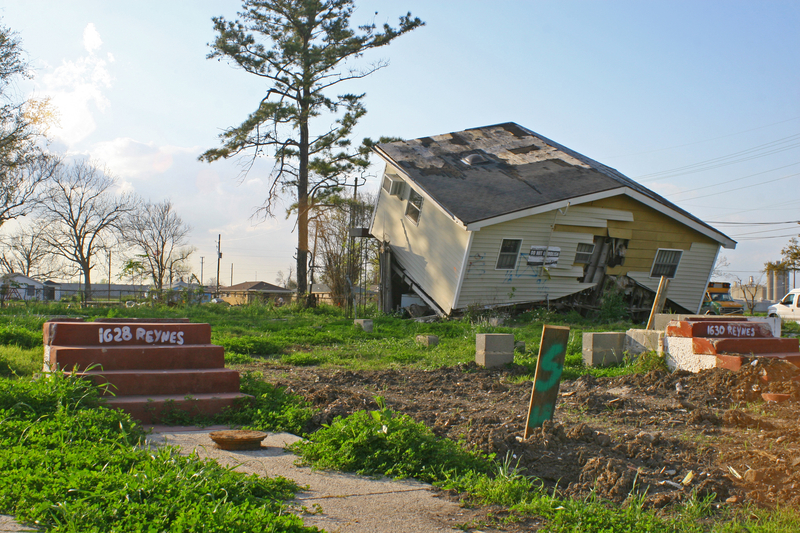
Is Your House Ready for the Next Natural Disaster
Natural disasters are becoming more frequent and severe. Whether it’s hurricanes, wildfires, floods, or earthquakes, millions of homes are at risk every year. While many people take basic precautions—like buying storm shutters or keeping an emergency kit—there are unconventional, highly effective ways to fortify your home against extreme weather and other disasters. These methods not only improve safety but also increase your chances of staying secure when traditional systems fail.

In this article, we’ll explore five innovative strategies to protect your home against natural disasters and make sure you’re fully prepared for whatever may come your way.
1. Build a Hidden Safe Room
A hidden safe room is an underground or hidden space designed to protect you and your family during extreme situations, like hurricanes, tornadoes, or even home invasions. These rooms are usually fortified with reinforced steel walls, a secure door, and an independent ventilation system. While traditional safe rooms are common in high-risk areas, hidden safe rooms offer an extra layer of security by being concealed from potential intruders.
Why it’s effective: A well-hidden safe room can be used for safety during disasters or societal unrest. Having one can offer peace of mind during both natural and man-made crises.
How to do it: Consider installing a hidden safe room behind a false wall, beneath a staircase, or in a basement. Use reinforced materials and ensure the room has an independent power source, like a backup generator or solar panels.
2. Reinforce Your Home’s Foundation with Earthbags or Rammed Earth
Earthbag construction or rammed earth techniques are ancient methods of building walls and foundations that are highly durable and capable of withstanding extreme environmental conditions, such as earthquakes or floods. Earthbags are filled with local soil or sand and stacked to form a solid, stable structure. This method creates walls that are incredibly strong, fire-resistant, and naturally insulated.
Why it’s effective: Earthbags and rammed earth can add an extra layer of stability and protection to your home’s foundation. These methods are eco-friendly and can withstand a range of extreme conditions, including earthquakes, floods, and fires.
How to do it: Earthbag construction can be used to create external walls, internal reinforcement, or even an outbuilding that can serve as a secure shelter. If you’re in an area prone to earthquakes, rammed earth construction can be particularly useful in reinforcing foundations or creating freestanding shelters.
3. Set Up Micro-Solar Systems for Power Resilience
When power lines go down during a natural disaster, having micro-solar systems can be a lifesaver. While many people install large solar panel arrays, a micro-solar system consists of smaller, modular panels that can be used to power essential devices, such as lighting, refrigerators, or communication systems.
Why it’s effective: A micro-solar system can provide backup power for essential devices even when the main grid fails. It’s also easier to install and maintain than a full solar setup, making it more accessible for homeowners on a budget.
How to do it: Install small solar panels with a battery storage unit that can power necessary appliances during an emergency. These systems can be set up on rooftops, in gardens, or as standalone units.
4. Flood-Proof Your Property with Landscaping
If you live in a flood-prone area, traditional sandbags and barriers can only do so much. Instead, consider flood-proof landscaping techniques that direct water away from your home. This involves strategically designing your yard to include features like swales, rain gardens, and permeable pavers to manage stormwater and reduce the risk of flooding.
Why it’s effective: Proper landscaping can prevent water from pooling around your home and reduce flood risks. It’s a proactive solution that can save you from costly damage to your home’s foundation and lower floors.
How to do it: Design your property to divert water away from your house by creating sloped surfaces, installing swales, and planting native vegetation that absorbs water efficiently.
5. Install Fireproof Barriers and Defensible Spaces
If you live in an area prone to wildfires, creating fireproof barriers and defensible spaces around your home can be crucial. A defensible space is a buffer zone around your home that is clear of flammable vegetation and debris, which helps prevent fires from spreading to your house. Installing fire-resistant siding, metal roofing, and flame-retardant barriers can also reduce the risk of fire damage.
Why it’s effective: Fireproof barriers and defensible spaces greatly increase your chances of surviving a wildfire. The materials used in fireproofing also add durability to your home, ensuring it’s more resilient to other types of natural disasters.
How to do it: Clear at least 30 feet of vegetation and flammable materials around your home, and install fire-resistant materials like stucco or brick for siding. Replace wooden decks or fencing with metal or composite alternatives, which are less likely to catch fire.
Conclusion: Strengthening Your Home Against the Unexpected
As natural disasters become more frequent and severe, it’s vital to think beyond basic disaster preparedness. By incorporating these unconventional but effective techniques—like hidden safe rooms, earthbag construction, micro-solar systems, flood-proof landscaping, and fireproof barriers—you can greatly improve your home’s resilience. In the face of increasingly extreme weather and environmental challenges, fortifying your home with these innovative strategies could be the key to surviving and thriving when disaster strikes.
